Appliances
Is Your Ceiling Box Strong Enough for a Fan? Find Out Now!
2025
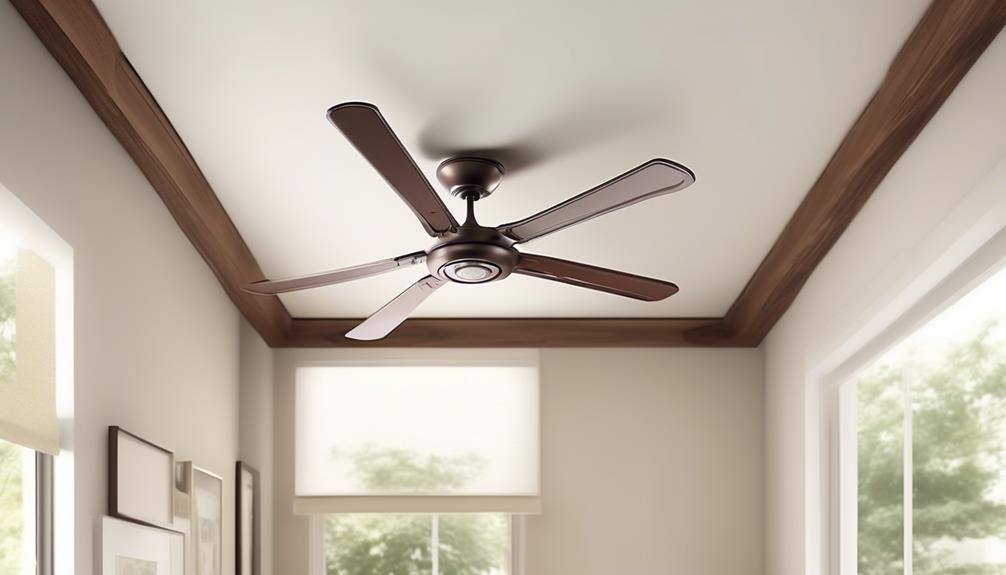
Curious about whether your ceiling box is equipped to support the weight and oscillation of a fan? Don’t worry! We’re on hand to assist you in evaluating your ceiling box’s capability to see if it’s suitable for a fan.
It's crucial to ensure that your electrical system can handle the additional load, while also considering the structural integrity of the box itself. We'll walk you through a thorough evaluation process, examining factors like weight limits, box mounting, and support analysis.
But remember, it's always best to consult with a professional before making any decisions. So, let's dive in and find out if your ceiling box is ready to keep you cool and comfortable!
Key Takeaways
- Conduct an electrical capacity assessment and structural integrity evaluation before installing a fan.
- Consider weight limit considerations and reinforce the ceiling box if necessary.
- Ensure proper box mounting and support analysis, including using a fan-rated box and mounting the fan directly to a ceiling joist.
- Seek professional assistance, inspection, and consultation for expert evaluation of the ceiling box's capacity and structural integrity, as well as recommendations for safety and stability.
Electrical Capacity Assessment
Assess the electrical capacity of your ceiling box to determine if it can support the installation of a fan. Before proceeding with the installation, it's crucial to conduct an electrical load assessment to ensure that your ceiling box can handle the additional load of a fan.
The electrical load refers to the amount of power consumed by the fan and other electrical devices connected to the same circuit. To perform the assessment, start by turning off the power to the ceiling box at the main circuit breaker. Next, remove the cover plate and inspect the wiring inside the box. Check if the wires are properly sized and in good condition.
It's also important to evaluate the proper grounding of the ceiling box to ensure the safety of the installation. A securely grounded box provides protection against electrical shock and helps prevent electrical fires. If you're unsure about the capacity or grounding of your ceiling box, it's recommended to consult a qualified electrician who can assess the box and make any necessary upgrades or modifications to support the installation of a fan.
Structural Integrity Evaluation
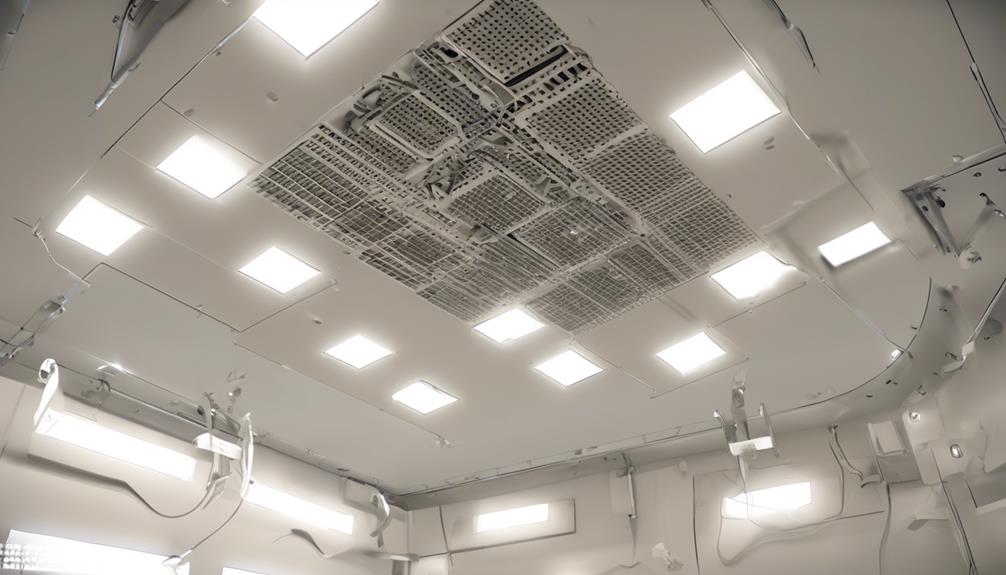
To ensure the safe installation of a fan, it's important to evaluate the structural integrity of your ceiling box following the electrical capacity assessment. The load capacity assessment determines if your ceiling box can handle the weight and movement of a fan. However, it's equally crucial to examine the structural soundness of the box itself.
Here are five key factors to consider during your structural integrity evaluation:
- Material: Check if your ceiling box is made of durable and sturdy materials such as metal or reinforced plastic. Avoid using boxes made of weak materials like thin plastic or flimsy cardboard.
- Mounting: Examine how securely the ceiling box is mounted to the ceiling joists or support beams. Ensure that the box is firmly attached and doesn't show any signs of loosening or sagging.
- Support beams: Assess the condition of the support beams or joists in your ceiling. Look for signs of damage, such as cracks, rot, or termite infestation. These issues can compromise the stability of the ceiling box.
- Connections: Inspect the connections between the ceiling box and the electrical wiring. Make sure they're properly secured and free from any loose or exposed wires. Faulty connections can lead to electrical hazards.
- Reinforcement options: Consider reinforcing the ceiling box with additional support, such as braces or support bars, if necessary. These reinforcements can enhance the load-bearing capacity and overall stability of the ceiling box.
Weight Limit Considerations
Consider the weight limit of your ceiling box when installing a fan to ensure structural stability and prevent any potential hazards. Before proceeding with the installation, it's important to assess the load bearing capacity of your ceiling box.
Begin by consulting the manufacturer's specifications for the maximum weight limit that the box can support. This information is crucial in determining whether your ceiling box is suitable for a fan installation.
If your ceiling box doesn't meet the weight requirements, there are ceiling box reinforcement options available. One option is to install a fan brace, which provides additional support and stability to the box. A fan brace typically consists of a metal bracket that attaches to the ceiling joists, providing a secure anchor point for the fan. This reinforcement option ensures that the weight of the fan is evenly distributed and properly supported.
Another option is to replace the existing ceiling box with a heavier-duty box specifically designed to support a fan. These boxes are typically made of metal and have higher weight limits. Ensure that the new box is securely fastened to the ceiling joists to provide adequate support.
Box Mounting and Support Analysis

Ensure that your box mounting and support method is secure and capable of safely holding the weight of the fan. To analyze the box mounting and support, consider the following:
- Mounting Hardware: Check if your ceiling box is equipped with appropriate mounting hardware. Look for sturdy screws, bolts, or brackets that are designed to hold the weight of a fan. Ensure that the hardware is properly installed and tightened to prevent any wobbling or instability.
- Box Type: Determine the type of ceiling box you have. Is it a standard electrical box or a fan-rated box? Fan-rated boxes are specifically designed to handle the weight and vibrations of a fan. If you have a standard box, it may not be suitable for fan installation, and you should consider replacing it with a fan-rated box.
- Ceiling Joists: Identify the location of the ceiling joists. The fan should be mounted directly to a joist for optimal support. Use a stud finder to locate the joists and mark their positions. If the joists aren't conveniently located, you may need to use a ceiling fan mounting bracket that spans multiple joists for added stability.
- Installation Process: Follow the manufacturer's instructions for installing the fan. Ensure that the fan is securely attached to the mounting bracket and that all electrical connections are properly made. Double-check the tightness of all screws and bolts to ensure a secure installation.
- Professional Assistance: If you're unsure about the stability of your ceiling box or lack the necessary tools and expertise for installation, it's recommended to seek professional assistance. A licensed electrician or handyman will have the knowledge and experience to ensure a safe and secure installation.
Professional Inspection and Consultation
For a comprehensive analysis of your ceiling box support and to ensure the safety and stability of your fan installation, it's recommended to schedule a professional inspection and consultation. Hiring a professional for this task will provide you with an expert evaluation of your ceiling box's capacity to support a fan, as well as any necessary recommendations for reinforcement or replacement.
During the inspection, the professional will carefully examine your ceiling box to determine its structural integrity. They'll assess factors such as the material of your ceiling box, its mounting method, and the condition of the surrounding ceiling joists. By conducting a thorough analysis, they can identify any potential weaknesses or concerns that may compromise the safety of your fan installation.
The cost of a professional inspection can vary depending on factors such as your location and the complexity of the job. However, considering the importance of ensuring the safety of your ceiling fan, the investment in a professional inspection is well worth it. It provides peace of mind and helps prevent potential accidents or damage caused by an insufficiently supported fan.
When scheduling the inspection, make sure to inquire about any safety precautions you need to take before the professional arrives. They may request that you remove any items or furniture from the area to facilitate their assessment. Following their instructions will help ensure a smooth and efficient inspection process.
Frequently Asked Questions
Can I Install a Ceiling Fan in a Room With a Low Ceiling?
You can install a fan in a room with a low ceiling, but it may not be ideal. Consider alternative cooling options for rooms with low ceilings, like portable air conditioners or tower fans.
Is It Possible to Install a Ceiling Fan in a Room With an Angled Ceiling?
Installing a ceiling fan in a room with an angled ceiling can be challenging, but with the right tips and proper fan selection, it is possible. Ensure the fan is securely mounted to prevent any accidents.
What Types of Ceiling Boxes Are Suitable for Supporting Ceiling Fans?
To determine if your ceiling box can support a fan, consider its weight rating and check if it meets the electrical wiring requirements. Ensure the box is securely attached to the ceiling joist for proper support.
How Do I Determine the Height at Which the Ceiling Fan Should Be Hung?
To determine the height at which to hang your ceiling fan, consider ceiling fan installation tips. Recommended ceiling fan heights can vary depending on the room size and ceiling height.
Can I Install a Ceiling Fan in a Room Without an Existing Ceiling Box?
To install a ceiling fan in a room without an existing ceiling box, you need to first determine if the structure can support the weight. Consult a professional to ensure you choose the right ceiling fan for your needs.
How Does the Type of Wiring in a Ceiling Fan Impact Its Installation on a Ceiling Box?
The type of wiring, such as ac vs dc ceiling fan wiring, can significantly impact the installation process of a ceiling fan on a ceiling box. AC wiring requires a traditional electrical connection, while DC wiring may require a different setup to ensure that the ceiling fan functions properly.
Conclusion
Based on the electrical capacity assessment, structural integrity evaluation, weight limit considerations, and box mounting and support analysis, it's crucial to seek professional inspection and consultation to determine if your ceiling box can support a fan.
This will ensure the safety and stability of the installation, avoiding potential risks or damages.
Don't leave it to chance, consult an expert to make an informed decision and enjoy the benefits of a properly supported ceiling fan.
- About the Author
- Latest Posts
Introducing Ron, the home decor aficionado at ByRetreat, whose passion for creating beautiful and inviting spaces is at the heart of his work. With his deep knowledge of home decor and his innate sense of style, Ron brings a wealth of expertise and a keen eye for detail to the ByRetreat team.
Ron’s love for home decor goes beyond aesthetics; he understands that our surroundings play a significant role in our overall well-being and productivity. With this in mind, Ron is dedicated to transforming remote workspaces into havens of comfort, functionality, and beauty.
Garage Door Opener
Choosing the Right Size Battery for Your Garage Door Opener
Find out why selecting the perfect battery size for your garage door opener is crucial for avoiding disruptions and ensuring smooth operation.

We’ve all experienced it – 70% of garage door opener malfunctions are caused by battery problems. Choosing the correct size battery is crucial for smooth operation.
But how do you know which battery is the perfect fit for your opener? Let's shed light on this essential aspect to keep your garage running smoothly and avoid unexpected disruptions.
Key Takeaways
- Consider manufacturer's voltage requirements for optimal performance.
- Choose the correct battery size for longer opener lifespan.
- Rechargeable batteries offer cost-effectiveness and consistent power.
- Adhere to manufacturer's recommendations for efficient operation.
Factors to Consider When Choosing Battery Size
When selecting the appropriate battery size for your garage door opener, it's crucial to carefully consider the voltage requirements specified by the manufacturer. Adhering to the manufacturer's recommendations ensures that the battery size is compatible with your garage door opener, providing the necessary power source for optimal performance. Choosing the correct battery size not only allows for efficient operation but also contributes to a longer lifespan for your garage door opener.
Opting for a rechargeable battery can be a practical choice, offering the advantage of being reusable and environmentally friendly. Rechargeable batteries provide a cost-effective solution in the long run, as they can be recharged multiple times before needing replacement. Additionally, they often have a higher capacity compared to disposable batteries, ensuring a consistent power supply to your garage door opener.
Types of Batteries for Garage Openers

For selecting the appropriate battery type for garage door openers, consideration of lithium, alkaline, and rechargeable options is essential based on their power characteristics and longevity.
When it comes to garage door opener batteries, here are the options to consider:
- Lithium Batteries: Known for their long-lasting power and reliability, lithium batteries are commonly used in garage door opener remote controls.
- Alkaline Batteries: Offering a non-rechargeable but reliable power source, alkaline batteries are another viable option for garage door openers.
- Rechargeable Batteries: Rechargeable options like nickel-cadmium (NiCd) and lithium-ion (Li-ion) provide sustainability and cost-effectiveness for long-term use in garage door openers.
- Manufacturer's Recommendations: Battery size and type depend on the specific brand and model of the garage door opener, so it's crucial to check the manufacturer's recommendations to ensure optimal performance and prevent malfunctions.
Popular Battery Brands for Openers
Among the array of battery brands available for garage door openers, Duracell stands out for its reputation of delivering enduring power and exceptional performance.
Known for their long-lasting power and reliable performance, Energizer batteries are a popular choice for various garage door opener models.
Panasonic batteries are recognized for their durability, reliability, and high energy output, making them a preferred option for many users.
Rayovac offers value for money with its combination of long-lasting performance and reliability, making it a top contender in the market of garage door opener batteries.
Eveready also provides dependable options for garage door opener batteries, ensuring consistent power and performance.
When choosing the right battery for your garage door opener, considering these popular brands can help you find the optimal balance between longevity, reliability, and performance for your specific needs.
How to Replace Garage Door Opener Battery

Having identified the specific battery type required for your garage door opener, the next step is to open the remote control cover correctly to access the battery compartment for replacement.
When replacing the battery for your garage door opener, follow these steps:
- Open the Cover: Gently slide the cover of the remote control in the direction indicated to reveal the battery compartment.
- Remove the Old Battery: Carefully take out the old battery by pushing it gently from the sides to release it from the connectors.
- Insert the New Battery: Place the new battery in the compartment, ensuring the correct orientation as per the markings inside.
- Close the Cover: Once the new battery is securely in place, slide the cover back onto the remote control until it clicks shut.
Troubleshooting Tips for Battery Issues
To troubleshoot battery issues with your garage door opener, we recommend conducting a thorough inspection of the battery compartment and connections. Start by checking the brand and model of your garage door opener remote to determine the correct battery type needed for replacement. It's crucial to use the specific battery number designated by the manufacturer to prevent compatibility problems with your garage door opener.
If necessary, refer to the owner's manual or open the transmitter to identify the exact battery required for your remote control. Pay attention to any colored smart buttons on the remote, such as yellow ones for Security+ 2.0 models, which may indicate the particular battery type needed. Always ensure the proper functioning of your garage door opener remote by using the right battery number and avoiding substitutions to prevent any potential damage.
Frequently Asked Questions
What Size Battery Does My Garage Door Opener Take?
We must ascertain the specific battery size required by your garage door opener for optimal performance.
It's crucial to identify the manufacturer-specified battery number and the type indicated by the colored smart buttons on the remote control.
Accessing the battery compartment through the proper opening of the remote control cover is essential for replacement.
Ensuring the correct battery size will guarantee seamless operation of your garage door opener.
What Battery Is Best for Garage Door Opener?
We've found that longevity is crucial when selecting the best battery for a garage door opener, with lithium batteries lasting approximately 5 years.
It's vital to match the specific battery type recommended for your transmitter to avoid compatibility issues.
Do Garage Door Openers Need Special Batteries?
Yes, garage door openers do require special batteries. These batteries, like 3-volt lithium or 12-volt options, are crucial for reliable remote operation in various settings. Having the correct battery size is essential to prevent malfunctions and ensure smooth garage door operation.
Additionally, certain keypads and remote controls may need 9-volt batteries for backup power in keyless entry systems. Selecting the right size and type of battery is vital for consistent functionality.
What Battery Do I Need for Liftmaster Garage Door Opener?
We need a CR2016 or CR2032 3-volt lithium battery for our LiftMaster garage door opener.
It's crucial to check the model specifications for the correct battery type. Proper maintenance and timely battery replacement are essential for smooth operation.
Make sure to have the right battery on hand to avoid any disruptions in functionality.
Conclusion
In conclusion, selecting the appropriate battery size for your garage door opener is imperative for optimal performance. By considering factors such as capacity, lifespan, and voltage requirements, you can ensure smooth operation.
Choosing reputable brands like Duracell or Energizer and performing regular maintenance will further enhance reliability. Remember, a well-chosen battery can make all the difference between seamless functionality and unexpected disruptions.
Choose wisely for peace of mind.
- About the Author
- Latest Posts
Introducing Ron, the home decor aficionado at ByRetreat, whose passion for creating beautiful and inviting spaces is at the heart of his work. With his deep knowledge of home decor and his innate sense of style, Ron brings a wealth of expertise and a keen eye for detail to the ByRetreat team.
Ron’s love for home decor goes beyond aesthetics; he understands that our surroundings play a significant role in our overall well-being and productivity. With this in mind, Ron is dedicated to transforming remote workspaces into havens of comfort, functionality, and beauty.
Garage Door Opener
Cost-Effective LiftMaster Garage Door Opener Options
Get ready to explore cost-effective LiftMaster garage door opener options that offer a perfect blend of affordability and functionality, unlocking hidden treasures for your garage needs.

When considering cost-effective LiftMaster garage door openers, it can feel like navigating a maze full of hidden treasures just waiting to be discovered.
From the sturdy chain drive models to the sleek belt-operated ones and the space-saving wall-mounted units, each offers a unique blend of affordability and functionality.
But how do you determine which one strikes the perfect balance between cost and features?
Let's explore the key factors that could influence your decision and help you find the ideal LiftMaster opener for your garage needs.
Key Takeaways
- LiftMaster offers cost-effective chain drive openers with myQ technology and battery back-up.
- Affordable belt drive models provide smooth, quiet operation with steel-reinforced rubber belts.
- Wall-mount openers offer space-saving solutions with WiFi connectivity and automatic door lock.
- LiftMaster openers feature built-in WiFi, various drive systems, warranties, and compatibility with accessories.
LiftMaster Chain Drive Opener Prices
Have you considered the cost-effective LiftMaster chain drive opener prices ranging from $200 to $400 for your garage door needs? When it comes to finding a reliable and smart solution for your garage, the LiftMaster Chain Drive Garage Door Opener offers a range of features at accessible prices. Equipped with myQ technology, these openers allow you to control your garage door from anywhere using your smartphone. The convenience doesn't stop there – within this price range, you can choose from various motor options to suit your specific requirements.
In addition to the advanced technology, LiftMaster chain drive openers come with valuable features such as battery back-up systems, built-in lighting for added security, and warranties for peace of mind. Whether you're looking for a basic model or one with all the bells and whistles, LiftMaster offers a range of options that cater to different budgets and preferences. Upgrade your garage door opener to a smart and efficient solution without breaking the bank.
LiftMaster Belt Drive Opener Costs

Considering the affordability of LiftMaster chain drive opener prices, let's now explore the cost-effective range of LiftMaster belt drive opener options for your garage door needs. LiftMaster belt drive garage door openers typically range from $300 to $600, with popular models falling between $375 and $425, offering a balance of quality and affordability. These openers are renowned for their smooth and quiet operation, making them perfect for homes where noise reduction is essential. The steel-reinforced rubber belt ensures durability, and extension kits are available for 8 or 10-foot doors. Customers can rely on the reliable performance of LiftMaster belt drive garage door openers, all at a reasonable price point.
| Features | Description |
|---|---|
| Smooth and Quiet Operation | Ideal for noise reduction in residential settings |
| Steel Reinforced Rubber Belt | Ensures durability and longevity |
| Reliable Performance | Consistent operation you can count on |
LiftMaster Wall-Mount Opener Options
Exploring LiftMaster wall-mount opener options reveals premium solutions ideal for high or irregular ceilings, offering advanced features for enhanced control and security. When considering LiftMaster wall-mount openers, there are several key features to keep in mind:
- Direct Drive Operation: These openers operate without belts or chains, ensuring a smooth and quiet performance.
- WiFi Connectivity and Smart Technology: Enjoy advanced control and monitoring capabilities with options for connectivity to your smart devices.
- Automatic Door Lock: Enhance security with the automatic door lock feature, providing peace of mind when away from home.
- Space-Saving Installations in Residential Settings: Designed for convenience, these openers are ideal for saving space in residential garages, making them a practical choice for any home.
With prices ranging between $500-$600, LiftMaster wall-mount openers offer a reliable and efficient solution for those looking to optimize their garage door opener in unique ceiling situations while enjoying modern conveniences and enhanced security features.
LiftMaster Opener Features Overview

When moving on to discuss the 'LiftMaster Opener Features Overview,' it becomes evident that LiftMaster garage door openers offer a range of advanced features tailored to enhance convenience and security for users.
LiftMaster garage door openers are equipped with built-in WiFi, allowing for seamless operation through smart technology. With options like belt drive and chain drive systems, users can choose the mechanism that best suits their needs. Additionally, features such as battery back-up ensure that the opener functions even during power outages, providing peace of mind.
LiftMaster Garage Door Openers also come with innovative functions like automatic door lock and lifetime warranties, adding value to the user's investment. These openers can be further enhanced with accessories such as cameras, keypads, and motion alerts, offering added convenience and security.
With prices ranging from $200 to $600, LiftMaster provides cost-effective solutions for various budgets, making them a practical choice for those seeking reliable and feature-rich garage door openers.
Garage Door Opener Buying Tips
To make an informed decision when buying a garage door opener, it's essential to consider factors such as budget, required features, and installation requirements. When shopping for a garage door opener, keep in mind the following tips:
- Types of Garage Door Openers: Explore options like chain drive models for affordability or belt-operated models for a balance of quality and cost.
- Smart Home Integration: Consider smart-enabled devices that can be controlled through the LiftMaster myQ app for added convenience.
- Installation Requirements: Evaluate whether you need a wall-mounted opener for space-saving solutions.
- Material Preferences: Decide between a metal chain or a rubber belt based on noise levels and durability.
Frequently Asked Questions
What Is the Average Price of a Liftmaster Garage Door Opener?
We found that the average price of a LiftMaster garage door opener can range between $200 to $1,000.
Basic chain drive models start around $200, while advanced belt-operated ones go up to $600.
Wall-mounted direct drive openers can cost from $400 to $800, and smart-enabled models with WiFi features may range from $400 to $1,000.
Prices vary based on horsepower, additional features, and user preferences.
What Is the Best Liftmaster Garage Door Opener for 2023?
We believe the best LiftMaster garage door opener for 2023 is the LiftMaster Wall Mount Garage Door Opener. Priced between $500-$600+, this model offers premium features like automatic door lock, WiFi, and Smart technology.
It's a top pick for homeowners seeking advanced functionalities. With its innovative design and reliable performance, the LiftMaster Wall Mount Garage Door Opener stands out as a cutting-edge choice for modern garage automation needs.
Which Is a Better Garage Door Opener Genie or Liftmaster?
When comparing Genie and LiftMaster garage door openers, we prefer LiftMaster for its durability, reliability, and advanced security features.
While Genie may seem more budget-friendly initially, LiftMaster's long-term performance and compatibility with smart home systems make it the superior choice.
For enhanced safety and convenience, LiftMaster stands out with its solid warranties and smart technology integration.
What Is the Average Life of a Liftmaster Garage Door Opener?
We've got the scoop on the average lifespan of a LiftMaster garage door opener! These durable and reliable openers typically last around 10-15 years with regular maintenance.
Proper installation and periodic servicing can even extend their longevity. Factors like usage frequency, environmental conditions, and maintenance practices play a role in how long they'll last.
Investing in a quality LiftMaster opener can be a smart choice due to its extended lifespan.
Conclusion
In conclusion, when it comes to cost-effective garage door opener options, LiftMaster offers a range of models to suit different needs and budgets.
Whether you're looking for a chain drive, belt drive, or wall-mount opener, LiftMaster has you covered with features like WiFi connectivity, Smart technology, and battery backups.
Investing in a LiftMaster opener is like having a reliable guardian for your garage, providing security and peace of mind like a trusty shield.
- About the Author
- Latest Posts
Introducing Ron, the home decor aficionado at ByRetreat, whose passion for creating beautiful and inviting spaces is at the heart of his work. With his deep knowledge of home decor and his innate sense of style, Ron brings a wealth of expertise and a keen eye for detail to the ByRetreat team.
Ron’s love for home decor goes beyond aesthetics; he understands that our surroundings play a significant role in our overall well-being and productivity. With this in mind, Ron is dedicated to transforming remote workspaces into havens of comfort, functionality, and beauty.
Garage Door Opener
DIY: Install Garage Door Opener Keypad in 10 Steps
Journey into seamless garage access with our 10-step guide to installing a keypad – unlocking convenience at your fingertips.

When it comes to improving the functionality of your garage door system, adding a keypad can offer a convenient way to enter your garage.
However, the process of installing one might seem daunting at first glance. But fear not, as we have broken down the steps into a clear and concise guide that will have you confidently tackling this project in no time.
Stay tuned for essential tips and tricks that will ensure a smooth installation process and have you enjoying the convenience of your newly installed keypad in no time.
Key Takeaways
- Plan and prepare tools and location for keypad installation with attention to accessibility and visibility.
- Protect the keypad from weather elements with proper positioning and a weatherproof cover.
- Program the keypad securely, ensuring alignment and stability for optimal performance.
- Verify wiring connections, test the keypad's functionality, and finalize installation with thorough checks for proper operation.
Gather Required Tools and Materials
To begin the installation process smoothly, ensure we've all the necessary tools and materials at hand, such as a screwdriver, screws, and the keypad itself. When gathering these items, make sure they're compatible with your specific garage door opener model. It's crucial to have everything organized and easily accessible outside the garage where the installation will take place. Check the contents of the keypad box to confirm all components are included, avoiding any setbacks during the setup. Having a stable surface to lay out the tools and materials will facilitate quick access and prevent any potential mishaps.
Proper preparation is key to a successful installation. By ensuring we've the correct tools and materials ready beforehand, we can make the process more efficient and eliminate unnecessary delays. By double-checking and gathering all necessary items outside the garage, we set the stage for a smooth and hassle-free installation of the garage door opener keypad.
Locate the Ideal Placement

When choosing the ideal placement for your garage door opener keypad, we need to consider a few key points.
Ensure the keypad is strategically positioned for easy access by all users, at a comfortable height.
Additionally, think about weather protection to prolong the keypad's lifespan.
Choose Strategic Position
For optimum accessibility and ease of use, position the keypad at a height that caters to both adults and children while ensuring comfortable operation.
When choosing the strategic position for the garage door opener keypad, consider installing it at a level that's easily reachable for all users. Ensure the keypad isn't too high or too low, allowing for convenient operation without straining or bending.
Take note of any potential obstructions or interferences in the selected mounting location to avoid issues with functionality. Additionally, aim to place the keypad in a well-lit area that provides clear visibility for entering the pin code, enhancing user experience and security.
Consider these factors to determine the ideal placement for the keypad to optimize its functionality within your garage.
Ensure Easy Access
Positioning the garage door opener keypad at a height accessible to all users, typically around 5 feet from the ground, ensures convenient and easy access for efficient operation.
Placing the keypad in a well-lit area enhances visibility, especially during nighttime use. Be mindful of obstructions or sharp edges that could obstruct the keypad's functionality and accessibility.
Opt for a location shielded from extreme weather conditions to prolong the keypad's lifespan. Validate the keypad's placement by testing it from various entry angles to guarantee effortless access.
Consider Weather Protection
After ensuring easy access for efficient operation, the next crucial step is to consider weather protection when locating the ideal placement for your garage door opener keypad. To shield the keypad from direct exposure to rain, snow, or extreme weather conditions, it is advisable to install it in a sheltered area. Look for spots under an eave or a covered porch to extend the keypad's lifespan. If mounting the keypad in an exposed area, consider weatherproofing it with a protective cover or housing. Choosing a location that minimizes contact with water and moisture is key to prevent damage and maintain functionality over time. Ensuring weather protection for the keypad is essential for outdoor installations to uphold performance and longevity.
| Placement | Protection |
|---|---|
| Under an eave | Shield from rain and snow |
| Covered porch | Protection from extreme weather |
| Weatherproof cover | Prevent direct exposure to moisture |
Prepare the Keypad Mounting Surface

To ensure a secure and professional installation, start by cleaning the mounting surface with a damp cloth to remove any dirt or debris that may affect the keypad's adherence.
Once the surface is clean, use a level to ensure it's flat before proceeding with the installation. This step is crucial in achieving a polished and secure finish for your keypad.
Additionally, consider using a stud finder to locate and mark the studs on the wall. This will provide added support when mounting the keypad, ensuring it stays securely in place.
It's important to avoid mounting the keypad near any moving parts of the garage door to prevent interference or damage during operation.
Lastly, double-check the mounting surface for stability and suitability before proceeding with the installation to avoid any potential issues down the line.
Following these steps will help you set up your keypad efficiently and effectively.
Install Batteries in the Keypad

Let's start by checking the keypad manual for the specific 9-volt battery needed and opening the battery compartment accordingly.
Make sure to insert the battery following the polarity markings inside the compartment and securely close it for proper functionality.
Testing the keypad afterward will confirm the correct installation of the battery and ensure the keypad is ready for use.
Battery Installation Process
For optimal keypad performance, ensure the correct batteries are installed according to the manufacturer's specifications. Here's how to install the batteries properly:
- Check the Keypad Manual: Look up the specific battery requirements, typically 9-volt or AAA batteries, in the manual.
- Open the Battery Compartment: Use a screwdriver or follow the keypad's sliding mechanism to access the battery compartment.
- Insert Batteries Correctly: Pay attention to the polarity markings inside the compartment and insert the batteries accordingly.
- Securely Close the Compartment: Ensure the battery compartment is closed securely to establish proper connection and functionality.
Remember to replace the batteries periodically to maintain peak performance for your keypad.
Powering Up the Keypad
After successfully installing the batteries in the keypad, the next step is to power up the device by closing the cover securely to ensure proper functionality. To emphasize the importance of battery maintenance and replacement, here is a table outlining key points:
| Battery Maintenance Tips | |
|---|---|
| 1. Check battery life regularly | 2. Ensure proper polarity alignment |
| 3. Replace batteries promptly when low | 4. Avoid mixing old and new batteries |
| 5. Keep the battery compartment clean and dry | |
Following these guidelines will help maintain the keypad's efficiency and prevent operational issues. Remember, a well-powered keypad is essential for seamless garage door opener functionality.
Program the Keypad With Your Opener

To program the keypad with your opener, locate the colored learn button near the motor unit of the garage door opener. Different colors of learn buttons indicate specific programming methods for the keypad. Follow the manufacturer's instructions, as they typically involve a sequence of button presses to initiate programming mode.
Here are the steps to program the keypad accurately:
- Identify the color of the learn button on your garage door opener.
- Enter the programming mode by pressing the designated buttons on the keypad.
- Input a four-digit pin that you'll use to operate the keypad.
- Press the learn button on the garage door opener to synchronize the keypad with the opener.
It is crucial to test the programmed keypad by entering the pin and operating the garage door. This ensures successful synchronization and allows you to verify that the keypad is working correctly with your garage door opener.
Secure the Keypad in Place

Let's ensure the keypad is securely fastened in place by carefully aligning it with the level before tightening the screws evenly. Ensuring the keypad is straight is crucial to prevent any future issues, such as misalignment or difficulties in using the keypad. Here is a handy table to guide you through securing the keypad:
| Step | Action |
|---|---|
| 1 | Use a level to check alignment. |
| 2 | Tighten screws evenly for stability. |
| 3 | Confirm snug fit against the wall. |
Connect the Wiring to the Opener

Let's now tackle the crucial step of connecting the wiring to the opener.
We'll provide an overview of the wiring connections, ensure proper wire termination, and test the connection for functionality.
This process is vital to ensure your keypad communicates effectively with the garage door opener.
Wiring Connections Overview
Before proceeding with the wiring connections for the keypad installation, ensure that the power to the garage door opener is turned off.
Here's an overview of the wiring connections process:
- Identify the terminals on the garage door opener where the keypad wiring will be connected.
- Match the keypad wires to the corresponding terminals on the opener based on the installation instructions.
- Use wire nuts to securely connect the keypad wires to the opener terminals for a reliable connection.
- Double-check the wiring connections to ensure they're properly seated and insulated before restoring power to the opener.
Proper Wire Termination
Have the wire strippers handy to carefully remove the insulation from the ends of the keypad wires before matching them to the corresponding terminals on the garage door opener.
Ensure to match the colors of the keypad wires to the designated terminals on the opener.
Insert each wire into its assigned terminal and securely tighten the screws to establish a reliable connection.
It's crucial to double-check all connections to confirm there are no loose wires or exposed copper, which could lead to electrical hazards.
Adhering to the manufacturer's guidelines for wire termination is essential to prevent any operational issues.
Following these steps diligently will help guarantee a safe and efficient installation of your garage door opener keypad.
Testing the Connection
After securely connecting the keypad wiring to the designated terminals on the garage door opener, the next crucial step is to test the connection to ensure proper functionality before finalizing the installation. Here are four essential steps to follow:
- Activate the Keypad: Press a few random numbers on the keypad to check if the display lights up and responds.
- Test with the Opener: Enter the access code followed by the open/close button to see if the garage door responds accordingly.
- Check for Consistency: Repeat the process multiple times to confirm consistent operation.
- Inspect for Errors: Look for any error codes or unusual behavior during testing to address any potential issues promptly.
Test the Keypad Functionality

To ensure the smooth operation of the keypad, thoroughly test its functionality by pressing all buttons to confirm responsiveness and entering the programmed PIN for seamless garage door control. When testing the keypad, ensure that each button responds promptly and accurately to your touch. Next, input the programmed PIN to verify that the garage door opens and closes as intended. Additionally, check if the keypad illuminates correctly for easy use in different lighting conditions. Look out for any error messages or beeping sounds that could signal problems with programming or connectivity. Evaluate the keypad's range by testing its operation from various distances to guarantee reliable performance.
| Keypad Functionality Test | ||
|---|---|---|
| Button Responsiveness | Programmed PIN Entry | Illumination Check |
| Error Message Detection | Range Evaluation |
Adjust Keypad Settings as Needed

Let's seamlessly continue our installation process by adjusting the keypad settings as needed for added security and convenience. Here are some essential adjustments you may want to consider:
- Change Pin Code: Enhance security by customizing the four-digit pin code on the keypad regularly.
- Customize Features: Take control of additional garage door opener features, such as lights, by customizing the keypad settings to suit your preferences.
- Time Delay Feature: Prevent accidental activation of the garage door opener by setting up a time delay feature on the keypad.
- Vacation Mode: Enable vacation mode on the keypad to disable remote access when you're away for an extended period, enhancing the security of your garage.
Remember to refer to the manufacturer's instructions for adjusting advanced settings on the keypad to ensure optimal performance.
Enjoy Your Newly Installed Keypad

Upon completing the installation of your new keypad, take a moment to familiarize ourselves with its functions and button layout for seamless operation. Understanding how each button corresponds to specific actions will enhance your experience with the keypad.
Test its functionality multiple times to ensure it consistently works as expected. Consider setting up temporary access codes for guests or service providers to make entry more convenient.
It's essential to keep the keypad clean and free from debris to maintain its functionality over time. Remember to note down the keypad's location and pin code for future reference or troubleshooting purposes.
Frequently Asked Questions
Can I Add a Keypad to Existing Garage Door Opener?
Yes, we can add a keypad to an existing garage door opener. It's a straightforward process that enhances security and provides keyless entry.
Keypads work with various garage door opener brands and models. This upgrade is cost-effective and seamlessly integrates into your current setup with proper installation and programming.
Enjoy the convenience and peace of mind that a keypad brings to your garage door system.
Which Is Better Wired or Wireless Garage Door Keypad?
When it comes to choosing between a wired or wireless garage door keypad, it's essential to weigh the pros and cons.
Wired keypads offer reliability without battery reliance, but may need professional installation due to wiring requirements.
On the other hand, wireless keypads provide flexibility and are easier to install DIY.
Understanding your preferences and garage door opener setup will help determine which option suits you best.
Can You Hardwire a Garage Door Keypad?
Yes, we can hardwire a garage door keypad. It involves connecting the keypad directly to the power source of the garage door opener for a reliable power supply. Check the keypad's instructions to confirm hardwiring compatibility and follow the correct steps.
This method offers a more stable power source than batteries, but it may not be essential for all setups. Hardwiring is an option for those seeking a consistent power solution.
Can You Install a Garage Door Opener by Yourself?
Yes, we can install a garage door opener by ourselves. It's a manageable task with the right tools and instructions. Doing it independently can save us money and give us a sense of accomplishment.
Before starting, ensure the opener is compatible with our system. Following step-by-step guides is key to success. With attention to detail and patience, most of us can tackle this project successfully and enjoy the convenience of a keypad entry system.
Conclusion
In conclusion, with our 10-step guide, installing a garage door opener keypad can be a straightforward DIY project that adds convenience to your daily routine.
Remember, 'measure twice, cut once' to ensure accuracy and precision during the installation process.
By following our detailed instructions and taking your time to do it right, you can enjoy the benefits of easy access to your garage with just a few simple clicks.
Happy keypad installing!
- About the Author
- Latest Posts
Introducing Ron, the home decor aficionado at ByRetreat, whose passion for creating beautiful and inviting spaces is at the heart of his work. With his deep knowledge of home decor and his innate sense of style, Ron brings a wealth of expertise and a keen eye for detail to the ByRetreat team.
Ron’s love for home decor goes beyond aesthetics; he understands that our surroundings play a significant role in our overall well-being and productivity. With this in mind, Ron is dedicated to transforming remote workspaces into havens of comfort, functionality, and beauty.
-

 Decor6 days ago
Decor6 days agoMaximalist Decor Explained: Embrace More Style
-

 Vetted4 weeks ago
Vetted4 weeks ago15 Best Drip Irrigation Systems to Keep Your Garden Thriving
-

 Vetted2 weeks ago
Vetted2 weeks ago15 Best Foot Massagers for Neuropathy to Soothe Your Feet and Relieve Discomfort
-
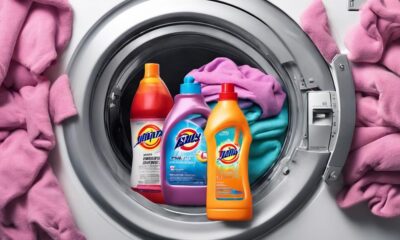
 Vetted2 weeks ago
Vetted2 weeks ago15 Best Sports Laundry Detergents for Keeping Your Activewear Fresh and Clean
-

 Vetted3 weeks ago
Vetted3 weeks ago15 Best Tall Toilets for Seniors That Combine Comfort and Safety
-

 Vetted3 weeks ago
Vetted3 weeks ago15 Best Dish Scrubbers to Keep Your Kitchen Sparkling Clean
-
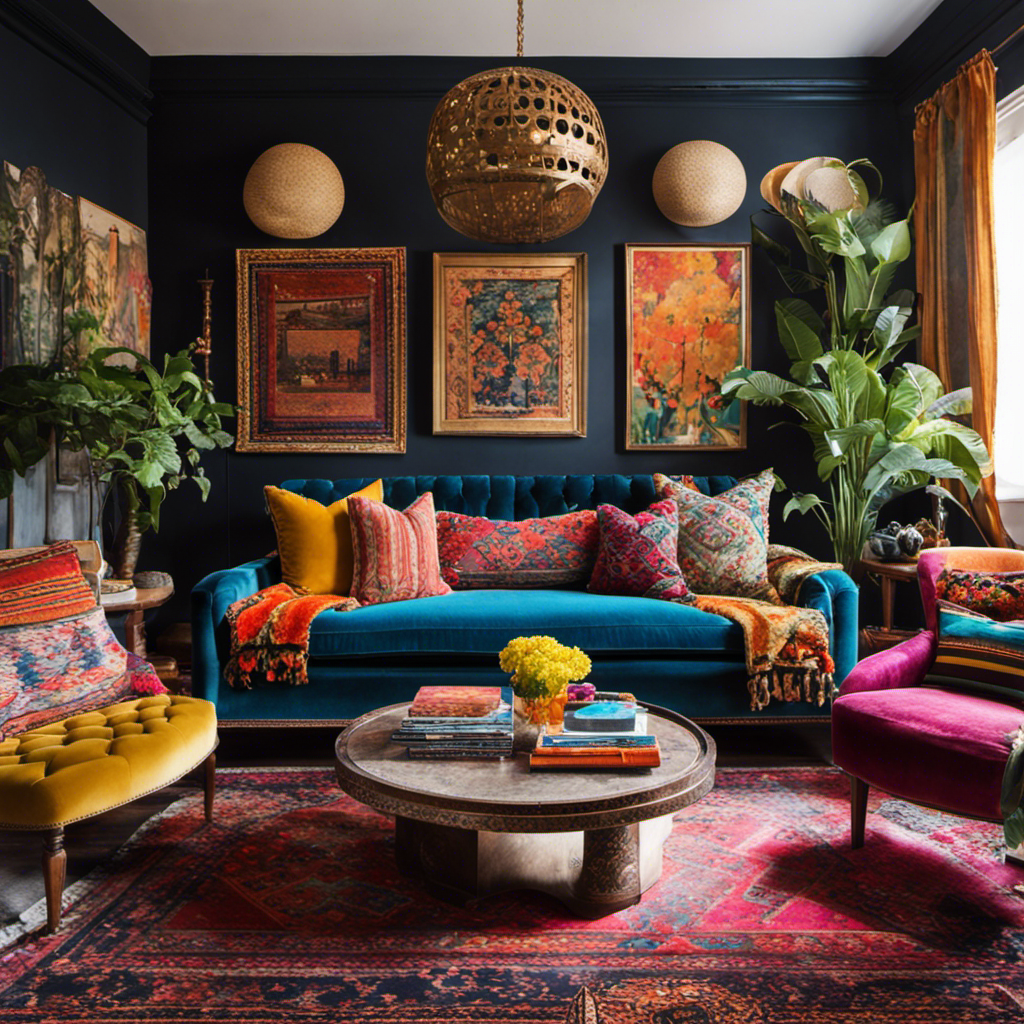
 Decor3 weeks ago
Decor3 weeks agoWhat Is Eclectic Home Decor
-
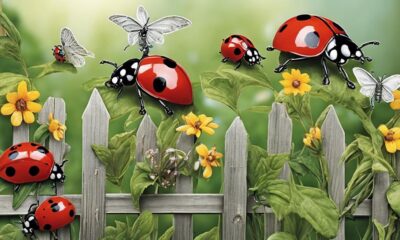
 Vetted3 days ago
Vetted3 days ago15 Best Organic Pest Control Solutions for a Naturally Pest-Free Home



























